Commercial Crew Program Overview
By Cliff Lethbridge
The NASA Commercial Crew Program is designed to employ commercial contractors to provide astronaut ferrying services to and from the International Space Station. It began as the Commercial Crew Development Program, in which two prime contractors, SpaceX and Boeing, were contracted by NASA to provide these services. The SpaceX vehicle originated as the Crew Dragon, while the Boeing vehicle originated as the CST-100 Starliner.
SpaceX Crew Dragon
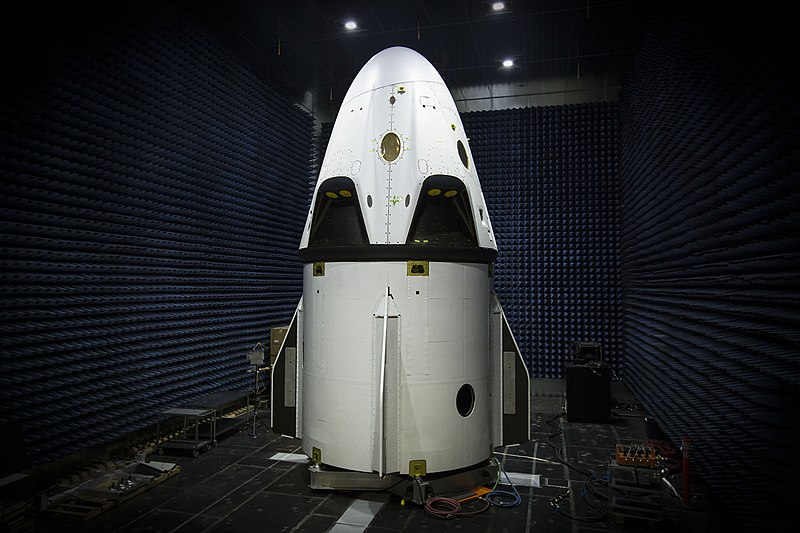
Classification: Crewed Space Capsule
Design Life (Free Flight): One Week
Design Life (Docked): Two Years
Crew Capacity: Maximum 7
Diameter: 12 Feet
Height: 27 Feet
Crew Dragon, also known as Dragon Rider, Dragon V2 or Dragon 2, is the second version of the SpaceX Dragon family of space capsules. It is a human rated vehicle and incorporates a set of four side-mounted thruster pods, each having two Super Draco engines. These could be employed in an in-flight emergency to carry the spacecraft to a safe distance away from the booster rocket. Crew Dragon can fly atop Falcon 9 rockets. It features larger windows, new flight computers and avionics and redesigned solar arrays over that of the previous unmanned Dragon capsule. In September, 2014, NASA officially selected Crew Dragon to carry astronauts to and from ISS as part of the Commercial Crew Program contract.
Boeing CST-100 Starliner
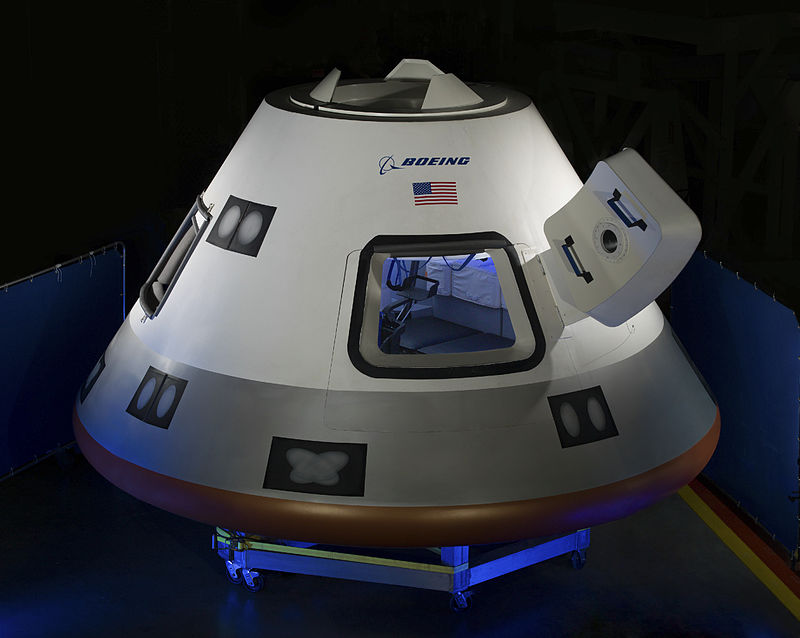
Classification: Crewed Space Capsule
Design Life (Free Flight): 60 Hours
Design Life (Docked): 210 Days
Crew Capacity: Maximum 7
Diameter: 15 Feet
Height: 16.5 Feet
The Crew Space Transportation (CST)-100 Starliner is Boeing’s entry into the NASA Commercial Crew Program, intended to ferry astronauts to and from the International Space Station. CST-100 Starliner is similar, but not identical to, the NASA Orion Spacecraft under development by Lockheed Martin. It is approximately the same size as the Apollo Command Module and is designed to be flown atop Atlas V, Delta IV, Falcon 9 and Vulcan rockets. NASA selected CST-100 Starliner to be an official finalist in the Commercial Crew Program in September, 2014.
Selected Stories From The Commercial Crew Program
August 2, 2020
Crew Dragon Demo-2 Ends With Gulf Splashdown
Reported by Cliff Lethbridge
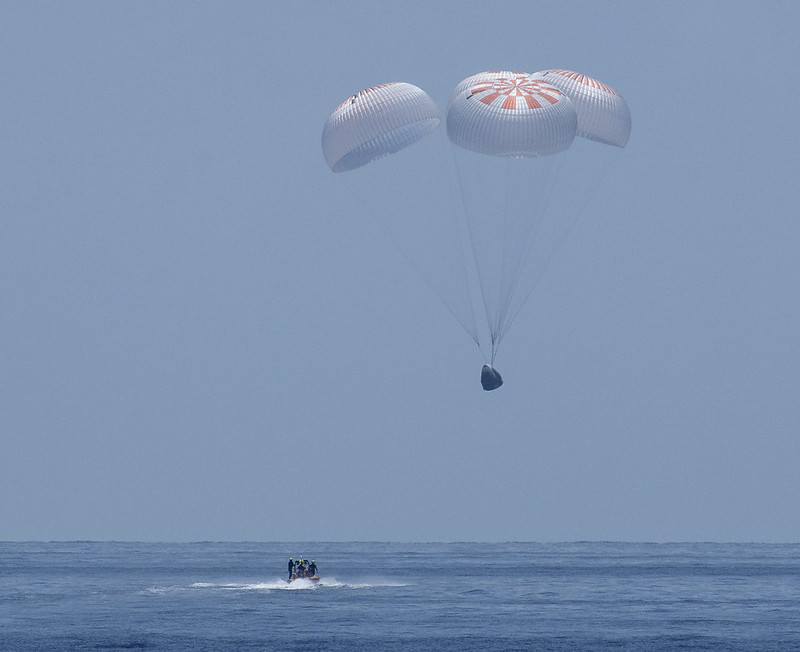
Crew Dragon Demo-2 Approaches Splashdown, Photo Courtesy NASA
The SpaceX Crew Dragon Demo-2 mission ended with a successful splashdown in the Gulf of Mexico at 2:48 p.m. EDT today. Astronauts Bob Behnken and Doug Hurley returned to Earth in this, the first manned splashdown since the ASTP mission in 1975 and the first splashdown in the Gulf of Mexico, occurring about 34 miles off the coast of Pensacola, Florida. Splashdown had been planned for the Atlantic Ocean near the coast of Cape Canaveral but was relocated due to the presence of Tropical Storm Isaias. The astronauts spent 64 days in space as members of the International Space Station (ISS) Expedition 63 crew.
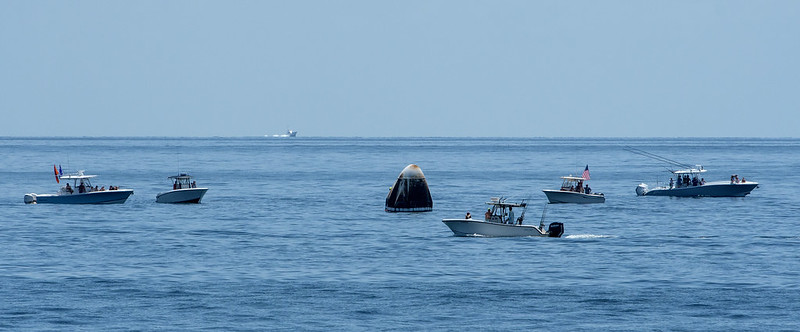
Crew Dragon Demo-2 After Splashdown, Photo Courtesy NASA
This marked the first time a commercial spacecraft carried astronauts into space and returned them safely to Earth. The Crew Dragon spacecraft, dubbed Endeavour by the crew, was stabilized, oriented and slowed at high altitude by two drogue parachutes, followed by the deployment of four main parachutes at an altitude of about 18,000 feet. Upon splashdown, the spacecraft was approached by two “fast boats” and ultimately approached by the recovery vessel “Go Navigator” about 30 minutes after splashdown. Endeavour was hoisted aboard the vessel and the astronauts egressed the spacecraft about 60 minutes after splashdown.
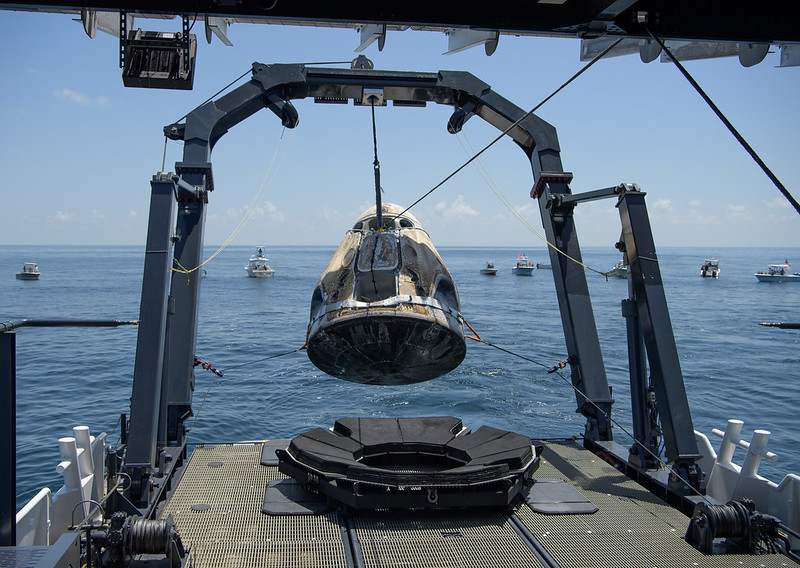
Crew Dragon Hoisted Onto Recovery Vessel, Photo Courtesy NASA
Egress was postponed slightly due to the detection of high levels of nitrogen tetroxide in the air surrounding the spacecraft. The fumes were successfully purged and no one was put in danger. The astronauts were placed in a medical facility aboard the vessel for checkups before being flown to the Naval Air Station Pensacola by helicopter, and ultimately flown back to Houston on a NASA jet aircraft. This successful recovery was another major step in certifying Crew Dragon for operational manned flights to and from ISS, the first of which, designated Crew-1, could occur as early as late September, 2020.
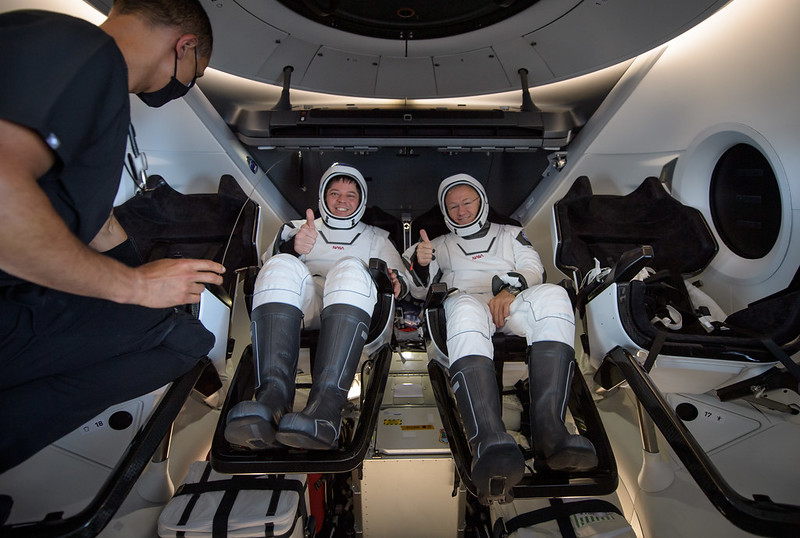
Astronauts Prepare To Egress Crew Dragon, Photo Courtesy NASA
May 30, 2020
Falcon 9 Supports First U.S. Manned Launch Since 2011
Reported by Cliff Lethbridge
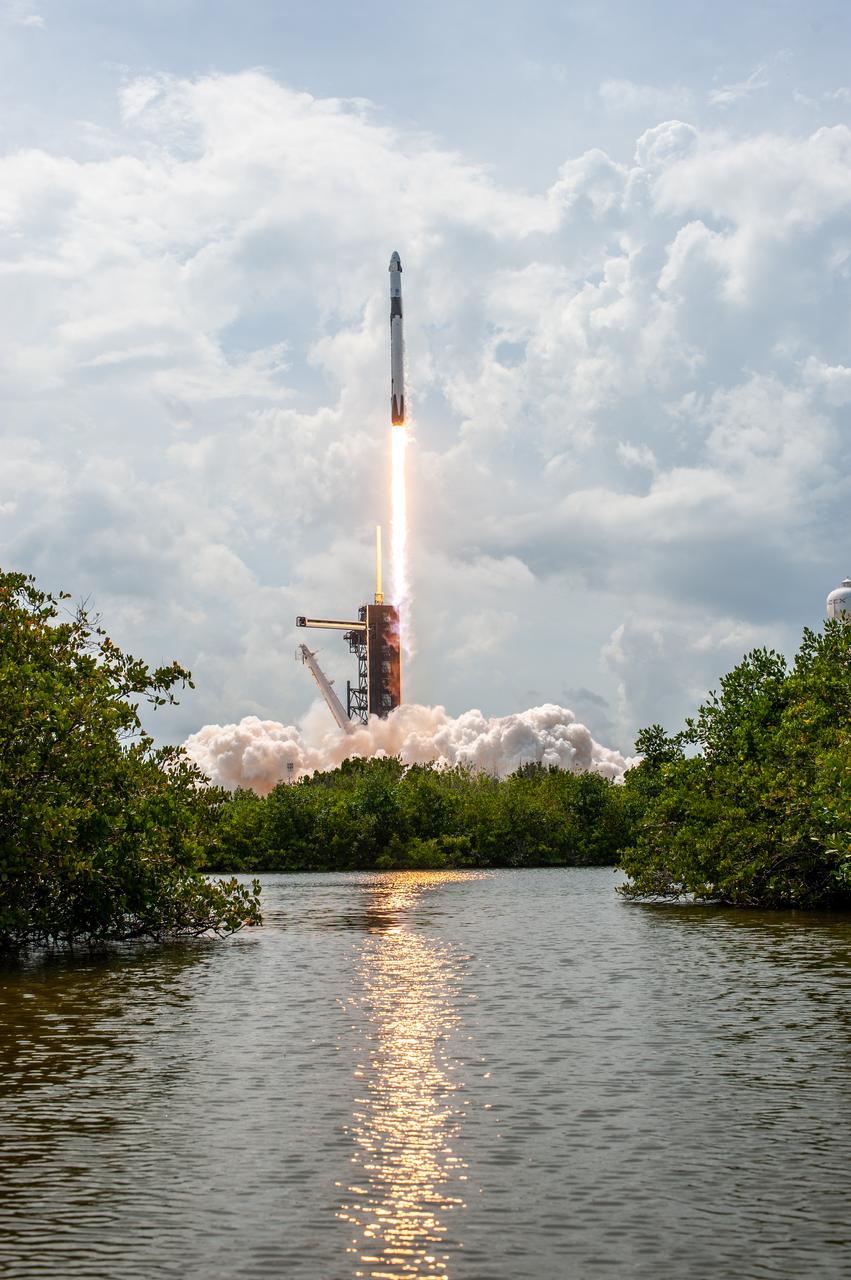
Falcon 9 Crew Dragon Demo-2 Launch, Photo Courtesy NASA
It was one of those historic moments that will be etched in the memory of the U.S. space program for years to come. A SpaceX Falcon 9 rocket successfully launched a Crew Dragon spacecraft carrying astronauts Bob Behnken and Doug Hurley at 3:22 p.m. EDT today from Launch Pad 39A at the Kennedy Space Center. Launch was originally set for May 27 but was postponed due to bad weather. This was the first manned launch from U.S. soil since the Space Shuttle was retired in July, 2011 and the first time U.S. astronauts were launched aboard a commercial rocket and spacecraft. The mission, Crew Dragon Demo-2, will be the final Crew Dragon test flight prior to regularly scheduled astronaut crew flights to and from the International Space Station under the NASA Commercial Crew Program contract with SpaceX. It will provide critical data on the performance of the Falcon 9 rocket, Crew Dragon spacecraft, ground support systems as well as on-orbit operations, docking and landing operations.
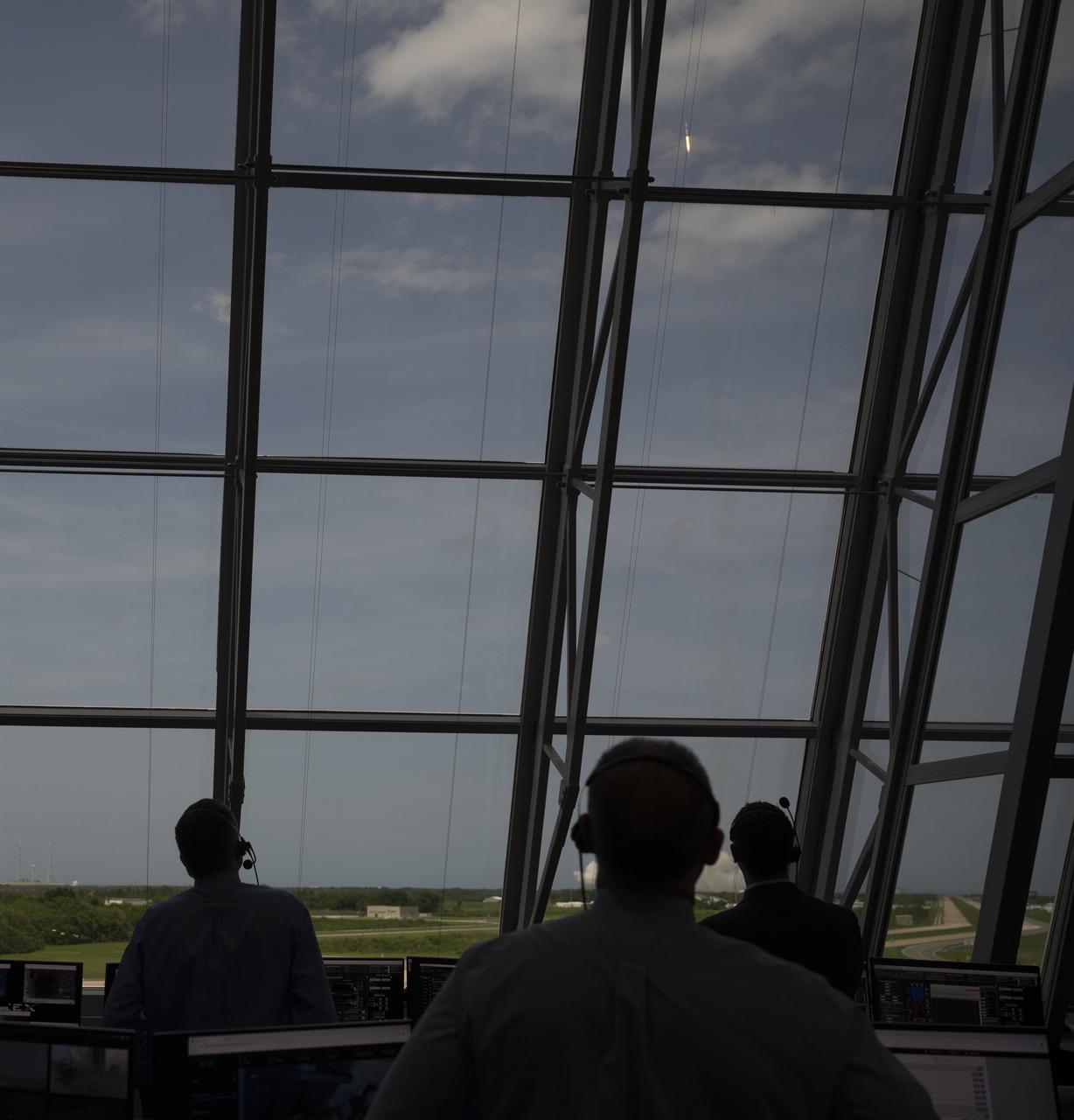
Falcon 9 Crew Dragon Demo-2 Launch From Firing Room, Photo Courtesy NASA
The Crew Dragon spacecraft is 13 feet in diameter and 26.7 feet in height. It weighs 13,228 pounds at launch and 6,614 pounds upon return to Earth. It is capable of carrying up to seven people into space. Crew Dragon has a trunk at its base for support and the carriage of equipment and is jettisoned just prior to the return to Earth. The space suits worn by the astronauts are far more comfortable and less bulky than those employed in previous manned space flights. The suits were designed and manufactured by SpaceX. They are designed to provide pressurization and temperature control for the astronauts during flight. Features of the spacesuits include a 3D printed helmet, touchscreen compatible gloves, flame resistant outer layer and hearing protection.
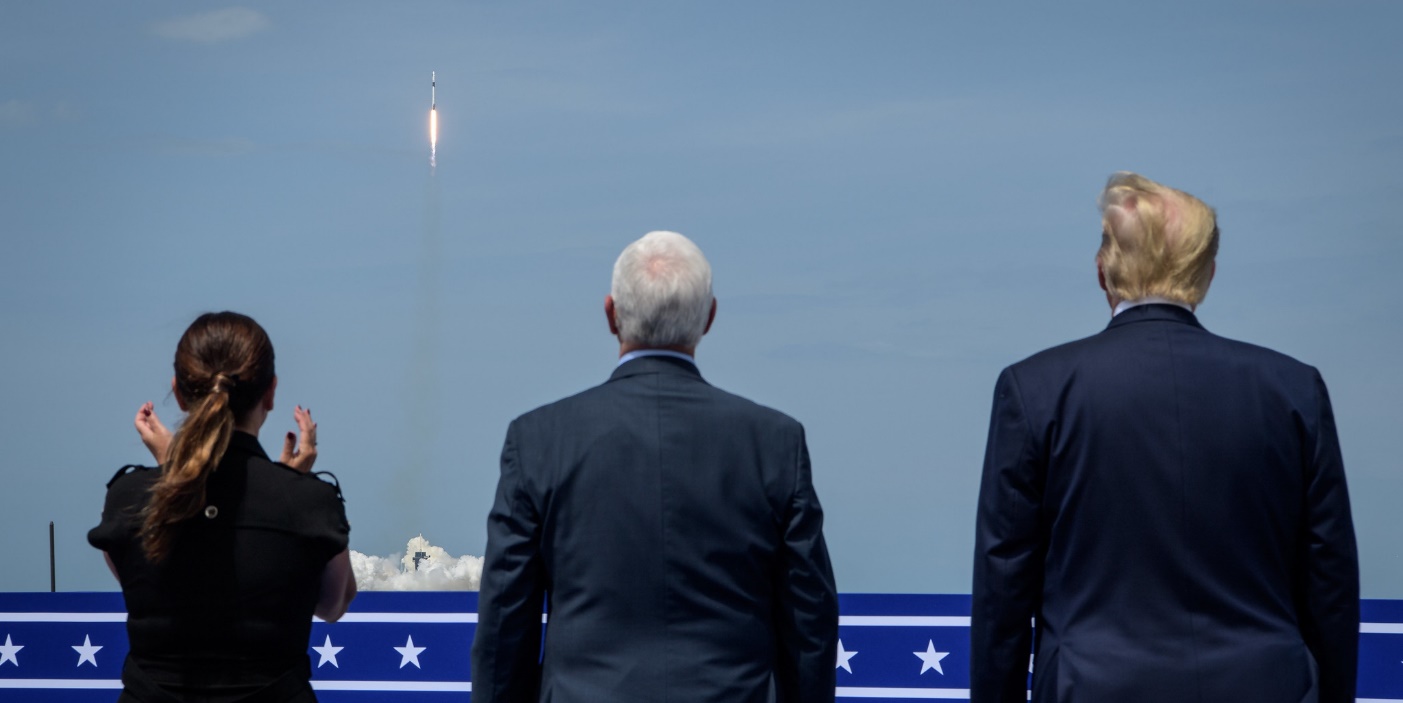
Second Lady Karen Pence (Left) Vice President Mile Pence (Center) And President Donald Trump (Right) View Falcon 9 Crew Dragon Demo-2 Launch, Photo Courtesy NASA
SpaceX controlled today’s launch from the historic Kennedy Space Center Launch Control Center Firing Room 4, which the company is now leasing as its primary launch control center. The Launch Control Center has previously supported the historic Apollo, Skylab, ASTP and Space Shuttle programs and is located adjacent to the cavernous Vehicle Assembly Building. Once launched, Crew Dragon is controlled by the SpaceX Mission Control Center in Hawthorne, California in association with International Space Station (ISS) Mission Control Center at the Johnson Space Center in Houston, Texas. Crew Dragon is scheduled to autonomously dock with ISS at 10:29 a.m. EDT Sunday, May 31. This will be the first manned spacecraft to autonomously dock with ISS, but the astronauts aboard will be able to take over the docking procedures should a problem develop. Crew Dragon will be berthed at the forward port of the ISS Harmony Module. It has not yet been determined how long astronauts Behnken and Hurley will remain aboard ISS, they could be there as long as several months if conditions warrant prior to returning to Earth aboard Crew Dragon with a splashdown on the Atlantic Ocean.
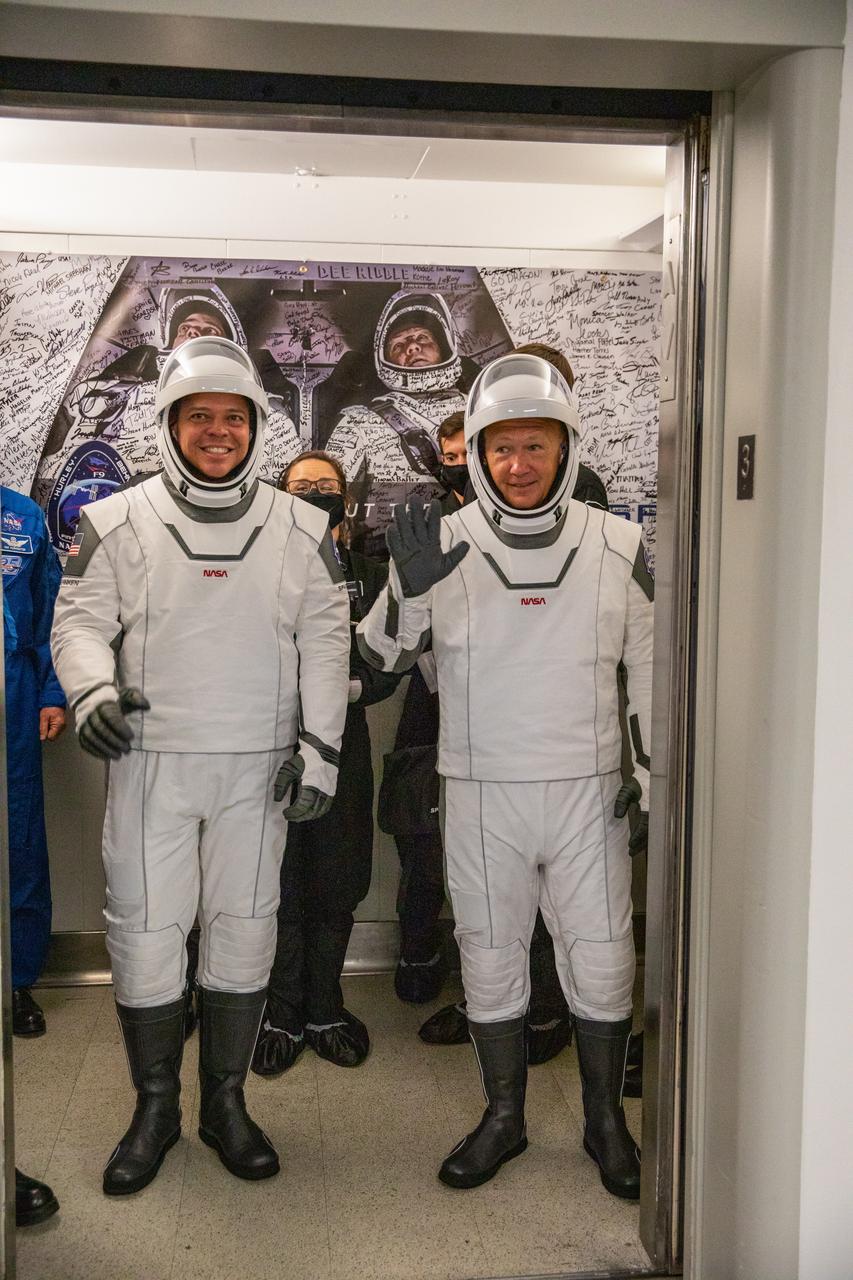
Astronauts Bob Behnken (Left) And Doug Hurley (Right) Photo Courtesy NASA
Astronaut Behnken is the joint operations commander for the Crew Dragon Demo-2 mission. As such he will oversee activities such as rendezvous, docking and undocking as well as continuing mission activities regarding Crew Dragon Demo-2 while aboard ISS. Behnken was selected as an astronaut in 2000 and flew aboard STS-123 and STS-130, performing three spacewalks during each mission. Astronaut Hurley is the spacecraft commander for the Crew Dragon Demo-2 mission and is in charge of activities including launch, landing and recovery. He was selected as an astronaut in 2000 and flew aboard STS-127 and STS-135, the final Space Shuttle mission. President Donald Trump and Vice President Mike Pence were both on hand at the Kennedy Space Center for today’s launch, viewing it from the balcony of the OSB-II building across the street from the historic Vehicle Assembly Building (VAB). The two participated in a ceremony and reception inside the VAB following the launch. Both made comments to hundreds of invited guests, dignitaries and media praising SpaceX and NASA for a job well done and looking forward to returning humans to the Moon by 2024 and Mars beyond that. Both efforts will require cooperation between the U.S. government and commercial companies like SpaceX in order to be successful. Should all go well during this mission, the first operational Crew Dragon manned flight is tentatively set for August 30, 2020.
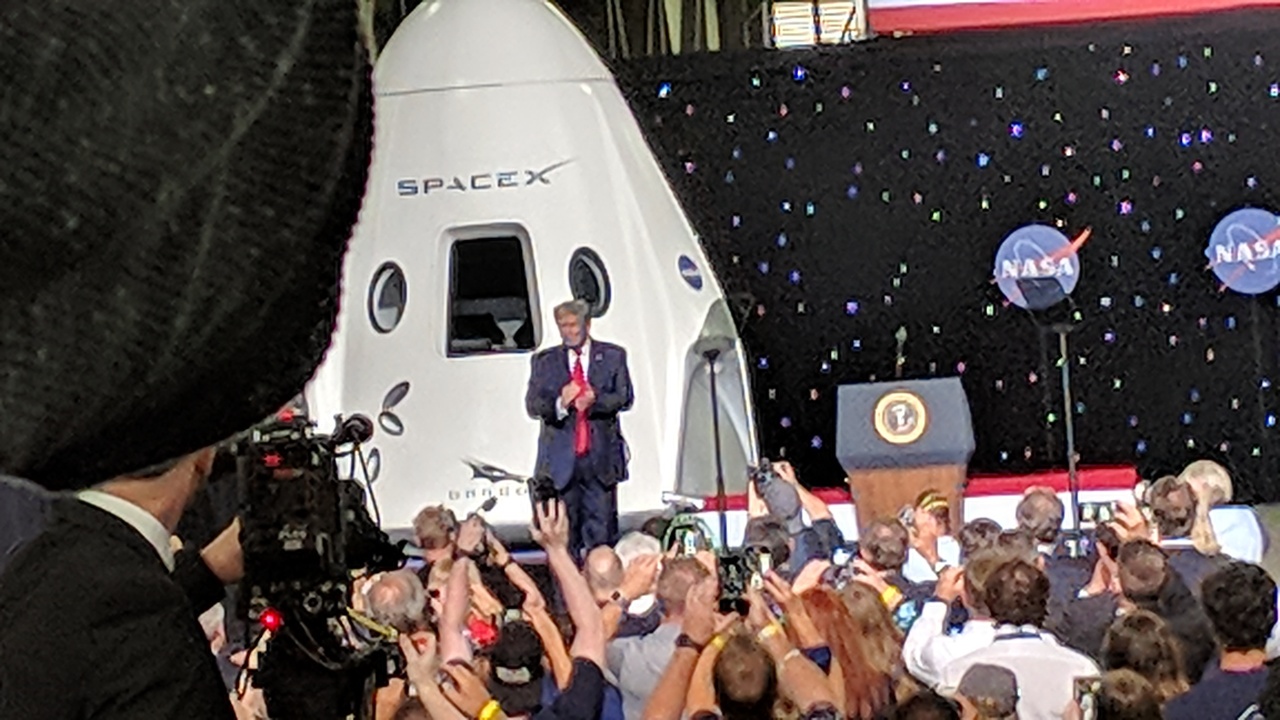
President Donald Trump Welcomed By Guests, Photo Courtesy Cliff Lethbridge/Spaceline
May 27, 2020
Falcon 9 Crew Dragon Demo-2 Launch Scrubbed
Reported by Cliff Lethbridge
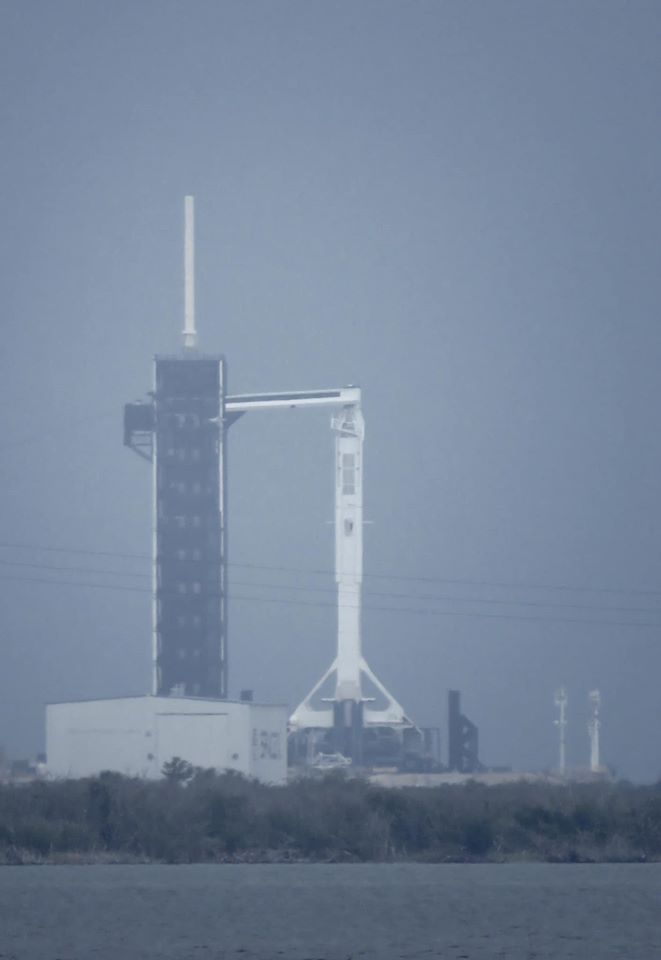
Falcon 9 Crew Dragon Demo-2 On Launch Pad, Photo Courtesy Carleton Bailie/Spaceline
Today’s SpaceX Falcon 9 Crew Dragon Demo-2 launch from Launch Pad 39A at the Kennedy Space Center has been scrubbed. Bad weather throughout the day had improved with only one weather constraint remaining red at launch time, that of unacceptable field mil readings, an indication of electrical activity on the ground and in the atmosphere. Those measurements were trending favorably in the minutes prior to launch, but more time was needed to evaluate them than was possible with only an instantaneous launch window available at 4:33 p.m. EDT. Launch was officially scrubbed at T-minus 16 minutes, 54 seconds. The next launch opportunity will be on Saturday, May 30 at 3:22 p.m. EDT. The SpaceX Crew Dragon spacecraft will be carrying astronauts Doug Hurley and Bob Behnken to the International Space Station in the last test flight before regularly scheduled manned flights can begin. This will be the first manned launch from U.S. soil since the retirement of the Space Shuttle program in July, 2011.

Falcon 9 Crew Dragon Demo-2 On Launch Pad, Photo Courtesy NASA
January 19, 2020
SpaceX Successfully Conducts Crew Dragon In-Flight Abort Test
Reported by Cliff Lethbridge
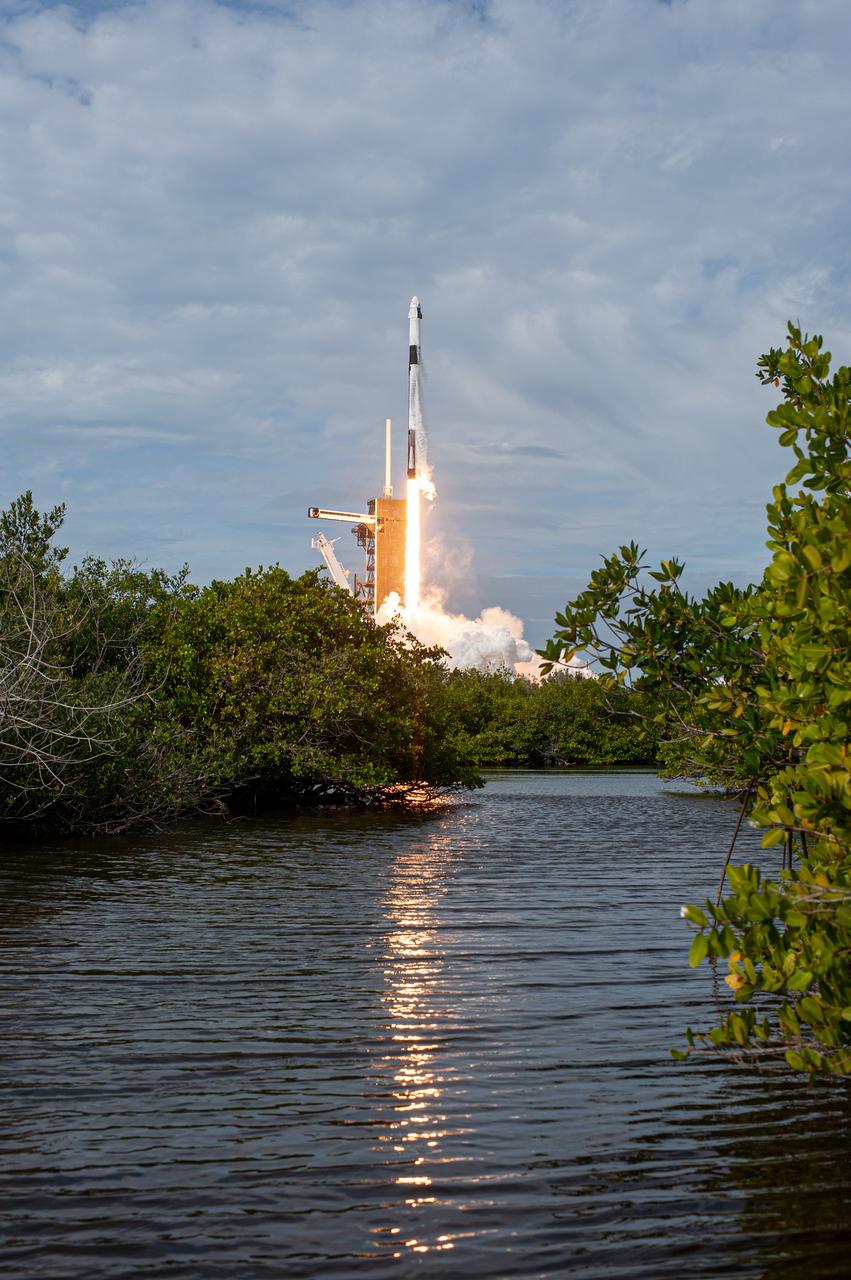
Falcon 9 Crew Dragon Launch, Photo Courtesy NASA
In the final hurdle prior to manned flights, SpaceX today successfully conducted an in-flight abort test of its Crew Dragon space capsule. A fully functioning Crew Dragon spacecraft poised atop a Falcon 9 rocket was launched from Launch Pad 39A at the Kennedy Space Center at 10:30 a.m. EST. Launch was originally scheduled for January 18 but was postponed 24 hours due to high winds and seas in the Crew Dragon recovery area off Cape Canaveral. Today’s launch was delayed 2.5 hours to allow high winds to die down in the recovery area. The Falcon 9 rocket was launched on a trajectory it would follow if launched to the International Space Station. A cutoff of the Falcon 9 engines was triggered at 1.5 minutes into the flight at an altitude of about 30,000 feet at the point of “Max Q”, or the point of maximum dynamic stress on the launch vehicle during ascent. At that point, the Crew Dragon spacecraft separated from the launch vehicle, carried away by a firing of its Super Draco thrusters. Not long after separation, the Falcon 9 booster exploded in a fireball. The violent explosion did not adversely affect the flight path of Crew Dragon.
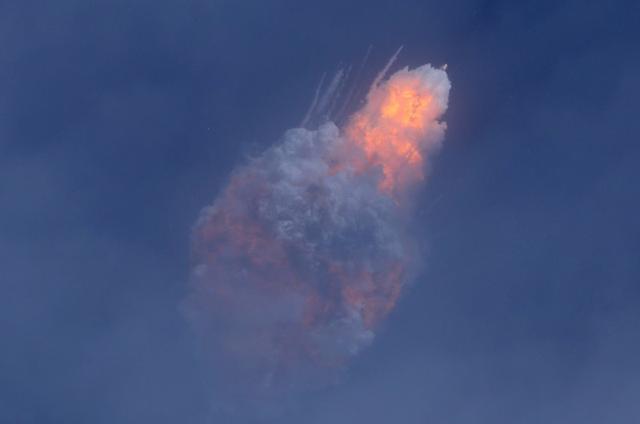
Falcon 9 Booster Explodes, Photo Courtesy Reuters
Following Super Draco shutdown, the spacecraft coasted unpowered to its highest point at an altitude of about 100,000 feet. Smaller Draco thrusters were then fired to re-orient the spacecraft for reentry and parachute deploy. Ultimately, the Crew Dragon drogue and main parachutes were deployed and the spacecraft made a soft landing on the Atlantic Ocean about 20 miles east of Cape Canaveral about 8 minutes after launch. Upon landing, Air Force personnel approached the spacecraft to rehearse astronaut rescue operations. Crew Dragon was recovered by a specialized SpaceX vessel for a return to Cape Canaveral for analysis and processing. SpaceX also dispatched vessels to retrieve debris from the Falcon 9 breakup, from which one especially large segment crashed onto the ocean, creating a fireball and huge mushroom cloud. Today’s successful test paves the way for future manned Crew Dragon flights under the NASA Commercial Crew Program, the first of which may occur this spring.
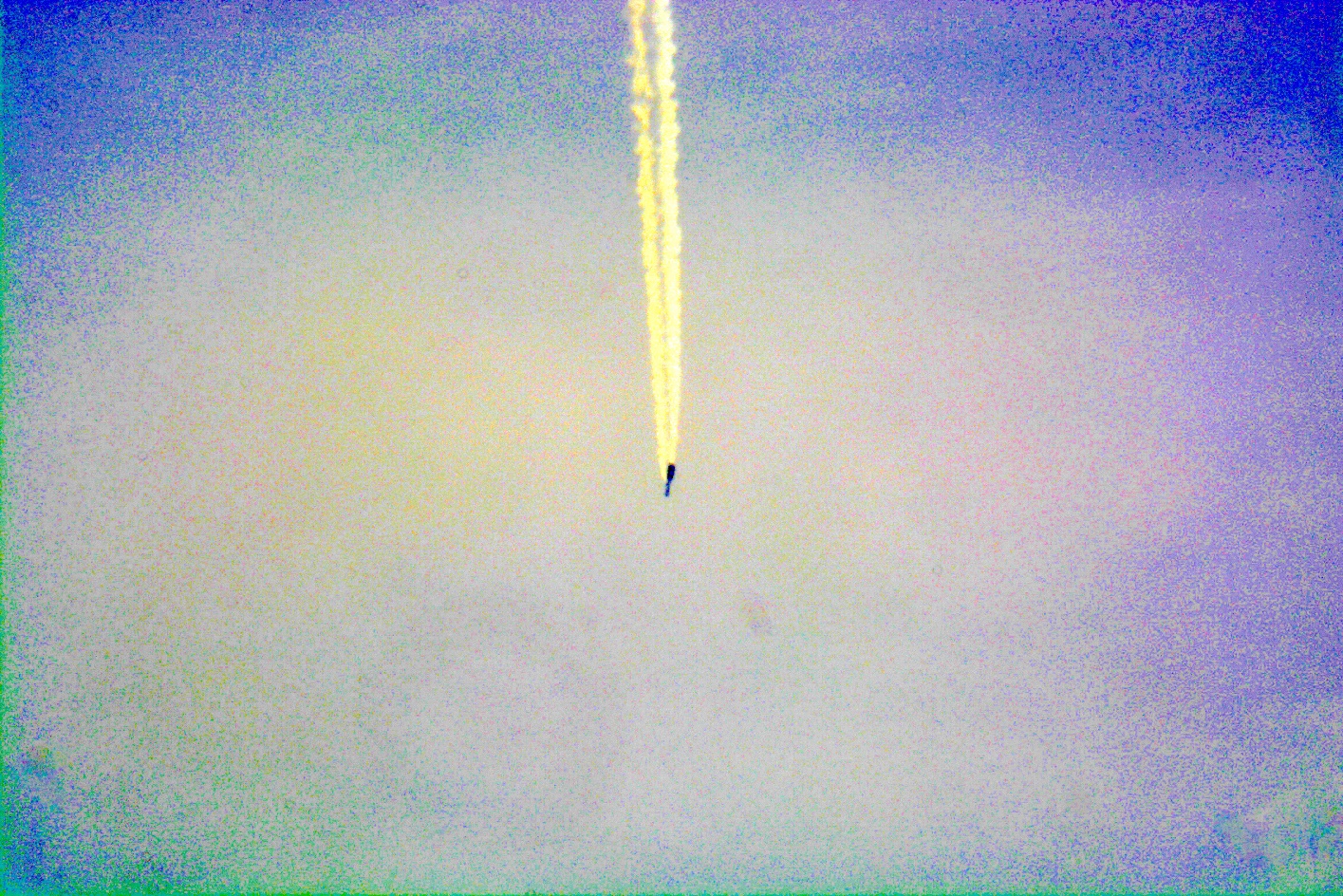
Large Falcon 9 Booster Fragment Falls To Ocean, Photo Courtesy Lloyd Behrendt/Spaceline
December 20, 2019
Atlas V Launches CST-100 Starliner But Spacecraft Cannot Reach ISS
Reported by Cliff Lethbridge
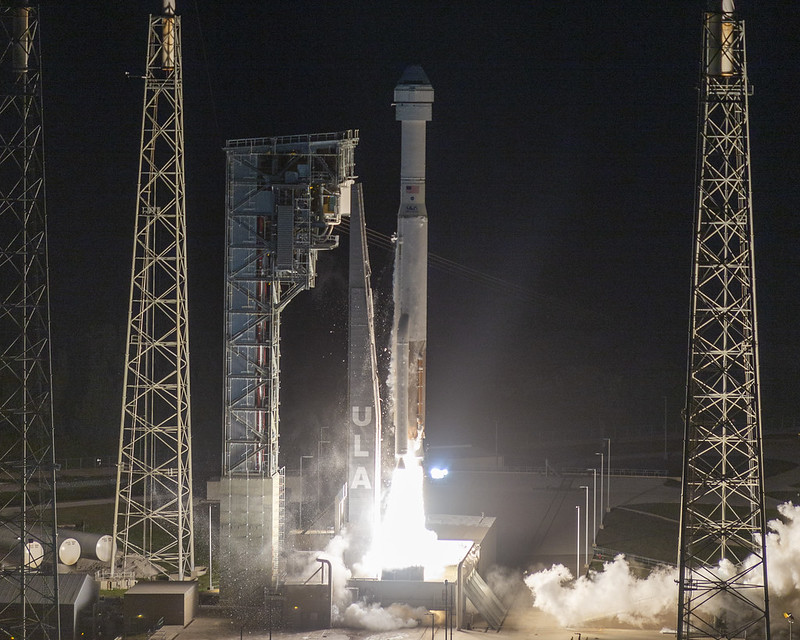
Atlas V CST-100 Starliner Launch, Photo Courtesy United Launch Alliance
A United Launch Alliance Atlas V rocket successfully launched an unmanned Boeing CST-100 Starliner spacecraft at 6:36 a.m. EST today from Launch Pad 41 on Cape Canaveral Air Force Station. Although the launch phase of the mission was successful, a malfunction of the spacecraft will not allow it to rendezvous and dock to the International Space Station (ISS) as planned. Upon separation from the Atlas V second stage, the Starliner Mission Elapsed Timer (MET) malfunctioned and the spacecraft failed to perform its scheduled orbital insertion burn. Coupled with a gap between data relay satellites and subsequent temporary signal loss between ground controllers and the spacecraft, it became necessary to implement an emergency recovery maneuver to place Starliner in a safe orbit. The burn required to do so used up precious propellent, failing to leave enough fuel to facilitate a planned flight to ISS.
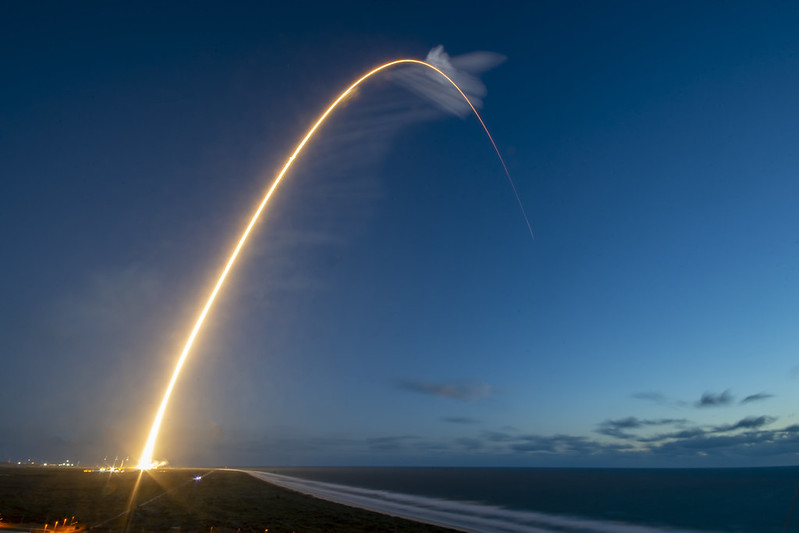
Atlas V CST-100 Starliner Ascent Streak Shot, Photo Courtesy United Launch Alliance
There was reportedly no damage to Starliner, and NASA said that had astronauts been aboard, they would have been fine. Pending weather outlook and further analysis of the MET malfunction, current plans are to bring Starliner back to Earth with a landing at White Sands, New Mexico, on Sunday, December 22. This unmanned Starliner test flight was intended to be the final hurdle before manned flights begin early next year, but NASA Administrator Jim Bridenstine said it is too early to say whether another unmanned Starliner test flight will be necessary before the commencement of manned flights. He noted that had astronauts been aboard Starliner today, they could have manually conducted the orbital insertion burn in lieu of the MET failure and successfully reached ISS. He also acknowledged that the storied Space Shuttle program began without unmanned test flights without sacrificing crew safety. Today’s failure will reportedly have no effect on SpaceX, whose Crew Dragon spacecraft is poised alongside Boeing’s Starliner in the NASA Commercial Crew Program. SpaceX is working fully independently from Boeing, although Boeing says that if they learn anything from today’s failure that may affect Crew Dragon, they will freely share the information with SpaceX.
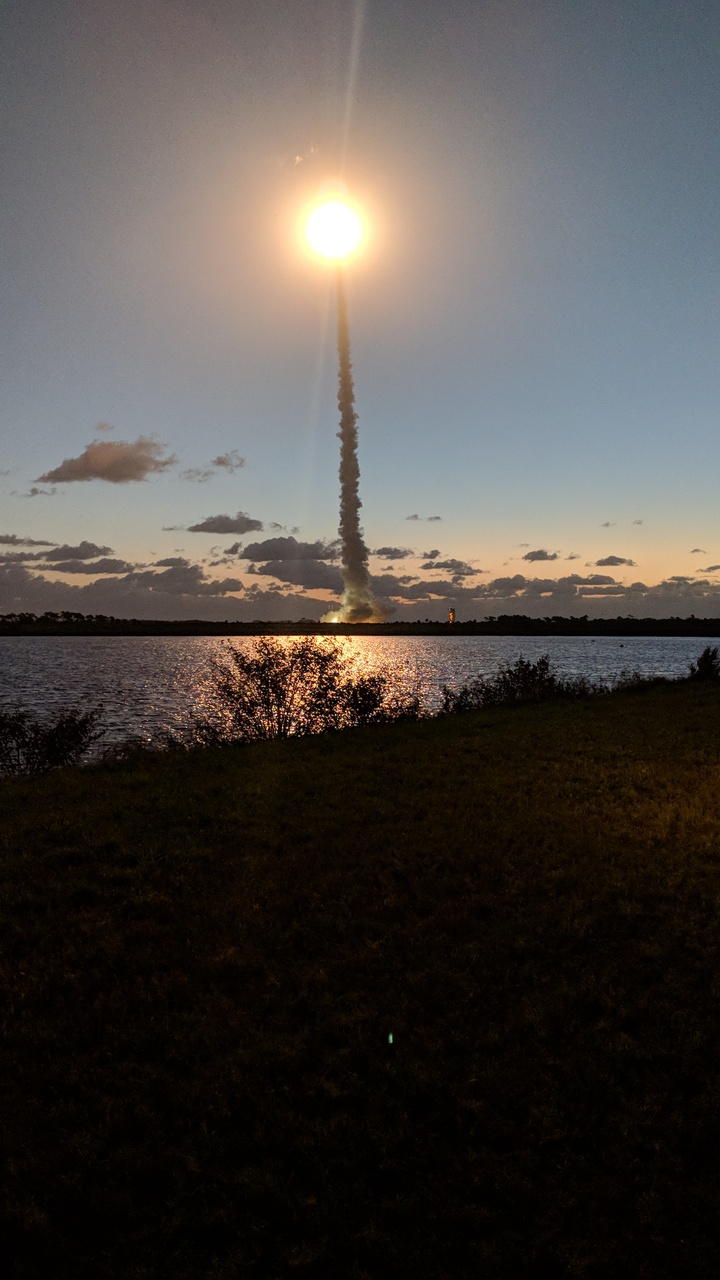
Atlas V CST-100 Starliner Launch View From Press Site, Photo Courtesy Cliff Lethbridge/Spaceline
Officials with NASA, Boeing and United Launch Alliance have stressed that this was a test flight, and although Starliner will not reach ISS, valuable data was, and will be, gained despite the failure. Primary successes today include the flawless performance of the Atlas V launch vehicle, which has undergone many important safety and technical modifications specific to the Starliner program. United Launch Alliance says among the primary test objectives of today’s flight are to demonstrate the performance of the launch vehicle, including guidance, navigation and control. Starliner was launched without a payload fairing, rather the spacecraft incorporates protective surfaces to prevent damage during ascent and this application functioned as intended. Boeing says much will be learned about Starliner on this flight despite the failure, including valuable information about its performance in orbit and validation of reentry and landing procedures.
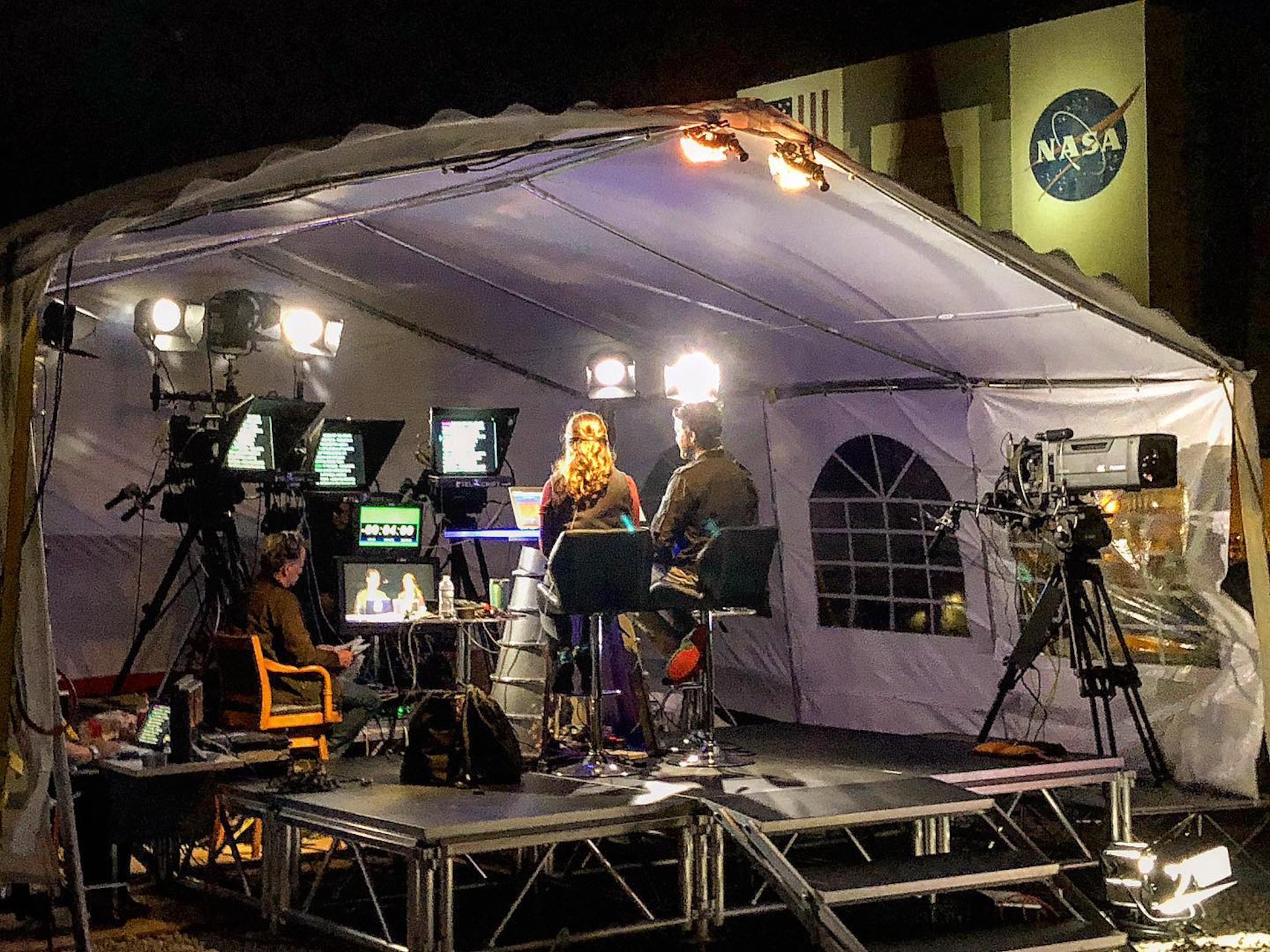
NASA TV Broadcast Of CST-100 Starliner Launch, Photo Courtesy Lloyd Behrendt/Spaceline
March 8, 2019
Crew Dragon Splashes Down East Of Cape Canaveral
Reported by Cliff Lethbridge
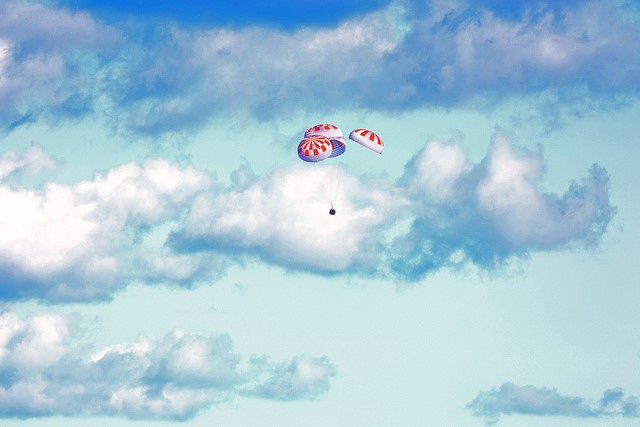
Crew Dragon Approaches Splashdown Off Cape Canaveral, Photo Courtesy NASA
An unmanned SpaceX Crew Dragon space capsule successfully completed a six-day mission to the International Space Station (ISS) with a splashdown on the Atlantic Ocean about 230 miles east of Cape Canaveral on-time at 8:45 a.m. EST today. Splashdown occurred about six hours after the spacecraft made an autonomous undocking from ISS. Crew Dragon was quickly recovered by a brand new SpaceX recovery vessel. This marks a major milestone for SpaceX and NASA, as the successful mission paves the way for manned spaceflights aboard the Crew Dragon, which could occur as early as July, 2019. The Crew Dragon Demo-1 flight, launched from the Kennedy Space Center on March 2, 2019, achieved several important firsts. These include the first commercially built and operated American crew-rated spacecraft to visit ISS, the first autonomous docking and undocking of an American spacecraft to and from ISS and the first use of a new, global design standard for the adapters that connect ISS and Crew Dragon which will also be used for the future NASA Orion spacecraft on its mission to the Moon. This was an exciting mission for SpaceX and NASA, as the space agency seeks to begin the first manned spaceflights from U.S. soil since the retirement of the Space Shuttle in 2011.
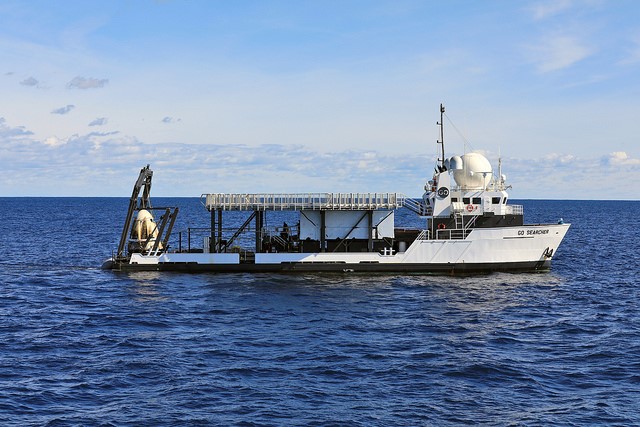
Crew Dragon Recovered On New SpaceX Recovery Vessel, Photo Courtesy NASA
March 2, 2019
Falcon 9 Successfully Launches Unmanned Crew Dragon Spacecraft
Reported by Cliff Lethbridge
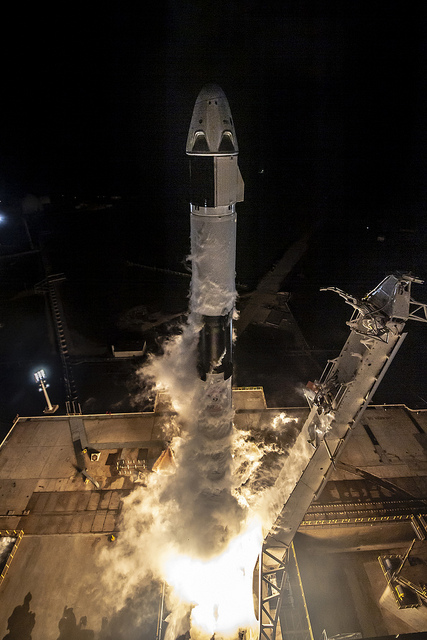
Falcon 9 Crew Dragon Demo-1 Launch, Photo Courtesy SpaceX
A SpaceX Falcon 9 rocket successfully launched the Crew Dragon Demo-1 mission at 2:49 a.m. EST today from Launch Pad 39A at the Kennedy Space Center. The unmanned Crew Dragon spacecraft was deployed on an International Space Station (ISS) transfer orbit about 11 minutes after launch. The Falcon 9 first stage booster employed today was being flown for the first time and was successfully recovered on the “Of Course I Still Love You” drone ship positioned about 300 miles east of Cape Canaveral on the Atlantic Ocean. The spacecraft, being flown for the first time for the NASA Commercial Crew Program, is scheduled to dock with ISS on Sunday, March 3 at about 6:00 a.m. EST after performing a series of phasing maneuvers. In a departure from the cargo-carrying Dragon capsule which is grappled and berthed to ISS, Crew Dragon will autonomously dock with ISS on a port last used for the docking of Space Shuttle Atlantis during mission STS-135 in July, 2011. Although uncrewed, Crew Dragon carries about 400 pounds of crew supplies and equipment.
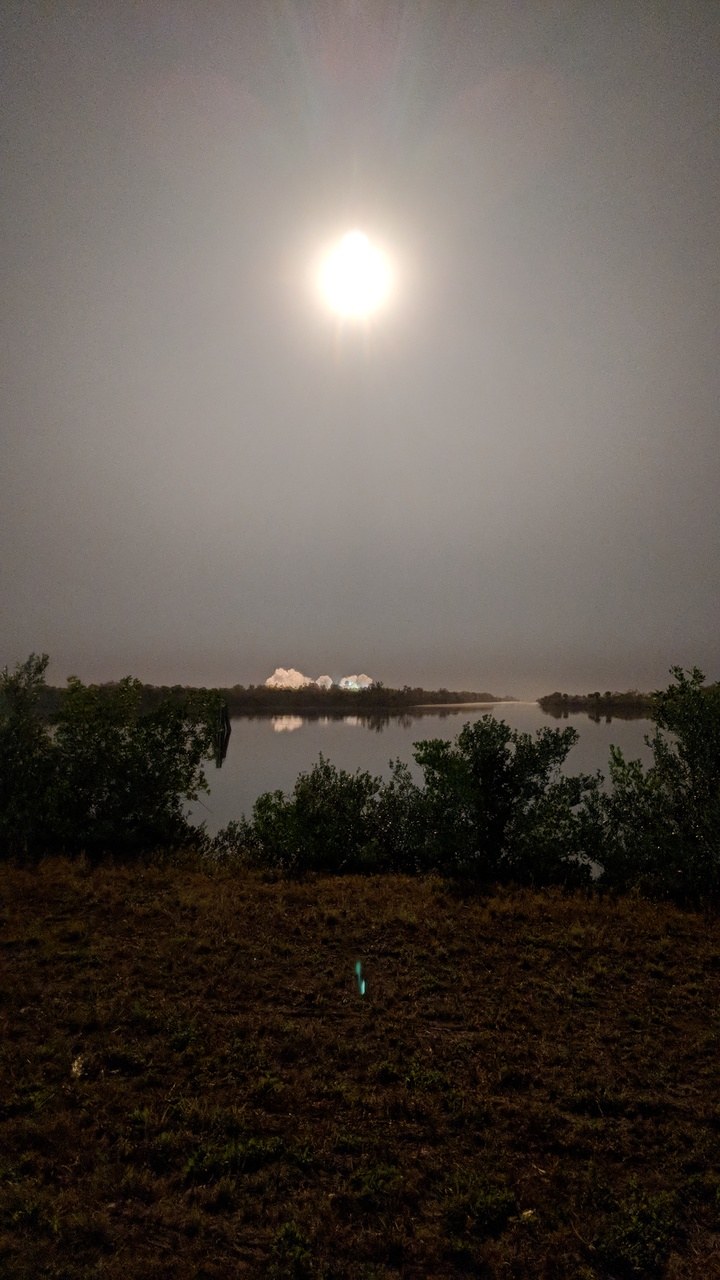
Falcon 9 Crew Dragon Launch View From Press Site, Photo Courtesy Cliff Lethbridge/Spaceline
Crew Dragon will remain docked to ISS for five days. The spacecraft will autonomously undock from ISS at about 2:30 a.m. EST on Friday, March 8. About five hours after Crew Dragon departs ISS, it will conduct its deorbit burn which will last about 15 minutes. It will take about 40 minutes for Crew Dragon to return to Earth. It will splash down in the Atlantic Ocean at about 8:45 a.m. EST. Crew Dragon will employ an enhanced four-parachute system to touch down gently and be recovered by a brand new recovery ship. SpaceX has been tasked by NASA to recover the spacecraft and its crew not more than one hour after splashdown. The entire mission, from pre-launch to recovery, is being managed by SpaceX flight controllers, with oversight by NASA.
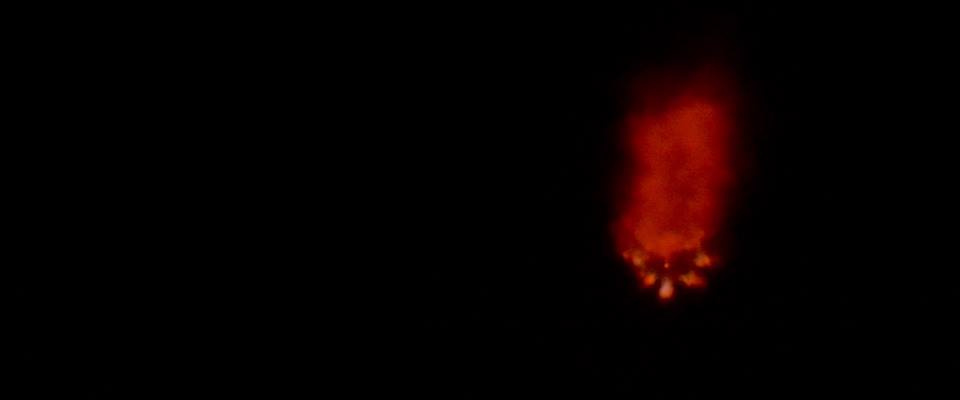
Falcon 9 Ascent At Booster Engine Cutoff, Photo Courtesy Lloyd Behrendt/Spaceline
The mission, officially named Crew Dragon Demo-1, is an important pre-cursor to the resumption of manned spaceflights launching from U.S. soil since the retirement of the Space Shuttle in 2011. Specific mission objectives include the demonstration of on-orbit applications of the spacecraft’s avionics system, docking system, communications/telemetry system, environmental control systems, solar array electrical systems and propulsion systems. Objectives also include demonstrating the performance of the guidance, navigation and control systems of both the Falcon 9 rocket and Crew Dragon spacecraft through ascent, on-orbit operations and re-entry. The demonstration flight will also measure acoustic and vibration levels and loads across the Crew Dragon interior and exterior which may affect its eventual astronaut occupants. The flight will also demonstrate the launch escape system trigger monitoring system. Crew Dragon performance from the beginning to end of the mission will be strictly evaluated by SpaceX and NASA. All of the mission data will serve to confirm that Crew Dragon can carry out its designed objective to ferry astronaut crews to and from ISS. If all goes well, there could be a launch of astronauts aboard Crew Dragon as early as July, 2019.
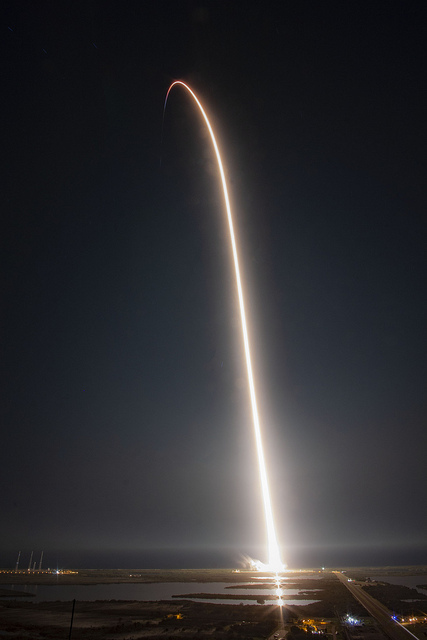
Falcon 9 Launch Streak Shot, Photo Courtesy SpaceX


